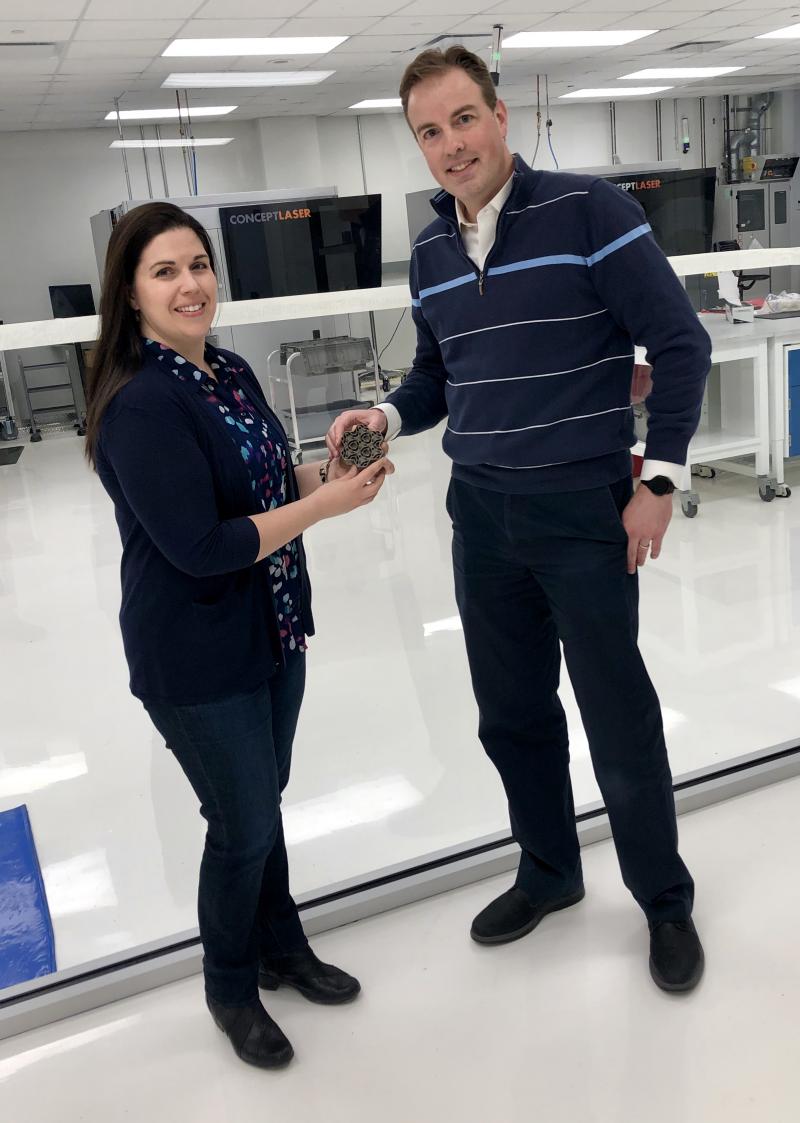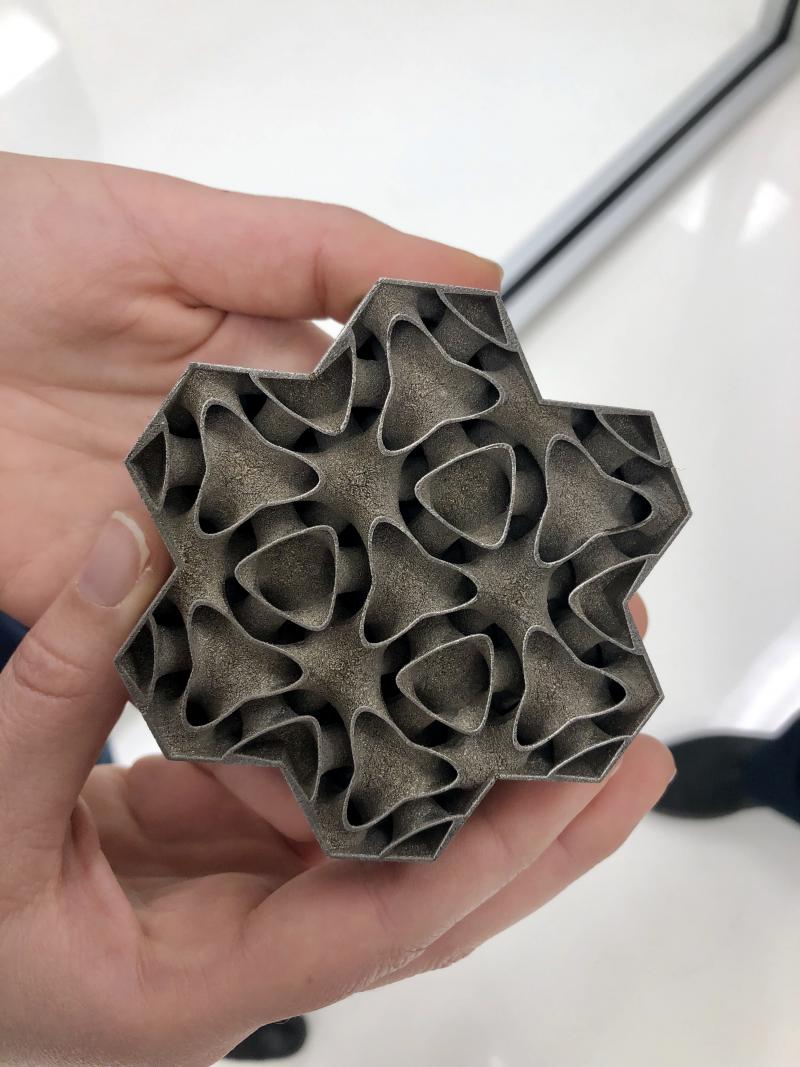GE Research, the R&D wing of American conglomerate GE, has used 3D printing to design an ultra-efficient, low-emission heat exchanger for power generation equipment. Called UPHEAT (Ultra Performance Heat Exchanger enabled by Additive Technology), the heat exchanger is part of a $2.5 M project led by GE Research.
The project was established through the Advanced Research Projects Agency’s (ARPA-E) High Intensity Thermal Exchange through Materials and Manufacturing Processes program (HITEMMP). In it, GE Research collaborated with University of Maryland (UMD) and Oak Ridge National Laboratory (ORNL).
Over the course of two years, the collaborators aim to “develop a high temperature, high pressure and super-compact heat exchanger that would enable cleaner, more efficient power generation in both existing and next generation power plant platforms” using 3D printing.
“We’re taking our deep knowledge in metals and thermal management and applying it in ways we couldn’t have before through the power of 3D printing,” commented Peter deBock, a Principal Thermal Engineer for GE Research and project leader on the ARPA-E award.
“With 3D printing, we can now achieve new design architectures previously not possible. And this will allow us to create an ‘UPHEAT’ device that can operate cost effectively at temperatures 250°C (450°F) degrees higher than today’s heat exchangers.”

A heat exchanger that takes the breath away
Heat exchangers are widely used in a multitude of applications like space heating, refrigeration, and air conditioning. Specifically, GE Research is focusing on application in power generation equipment like gas turbines. Comparing its purpose to functions inside the human body, deBock says, “Lungs are the ultimate heat exchanger, circulating the air you breathe to keep the body functioning at peak performance while also regulating your body’s temperature. Heat exchangers in power generation equipment like a gas turbine essentially perform the same function, but at much higher temperatures and pressures.”
The UPHEAT heat exchanger is made from a nickel superalloy designed by GE Research specifically for additive manufacturing. The material is capable of withstanding high temperatures and is crack-resistant. ORNL, a specialist in corrosion science, will test and validate the long term performance of the materials used.
Upon completion, the heat exchanger is expected to provide increased thermal efficiency of indirect heated power cycles, with reduced energy consumption and emissions. It will be capable of operating at temperatures up to 1,652 °F (900°C) and pressures up to 3626 psi (250 bar). With these properties, the UPHEAT could enable advanced applications in power and aerospace towards more energy efficient processes.
deBock adds that: “With additive manufacturing, GE and University of Maryland will now explore more intricate biological shapes and designs to enable a step change in heat exchanger performance that delivers higher efficiency and lower emissions.”

Advanced metal additive manufacturing with GE Research
GE Research, formerly known as GE Global Research, is currently part of a project funded by national 3D printing development partner America Makes to develop a commercial-grade, metal additive manufacturing system in collaboration with Lawrence Livermore National Laboratory (LLNL). Funded by the U.S. Air Force Research Laboratory (AFRL), the project is part of the Acceleration of Large-Scale Additive Manufacturing (ALSAM) scheme from America Makes.
The research and development division has also developed a process for creating 1:1 scale twin digital models of metal 3D printed parts for the U.S. Navy. Through the digital twinning process, the Navy will depend on GE to accelerate the production of mission-critical equipment.
“Using GE’s Digital Twin technology, we’re aiming to rapidly speed up the time that parts could be re-engineered or newly created using 3D printing processes,” said Ade Makinde, Principal Engineer of Additive Technologies at GE Global Research.
GE Additive has been nominated for the third annual 3D Printing Industry Awards in the OEM of the year (Enterprise) category. You can cast your vote and help decide this year’s winners now.
Subscribe to the 3D Printing Industry newsletter for the latest news in additive manufacturing. You can also keep connected by following us on Twitter and liking us on Facebook.
Looking for a career in additive manufacturing? Visit 3D Printing Jobs for a selection of roles in the industry.
Featured image shows prototype of 3D printed heat exchanger. Photo via GE.


